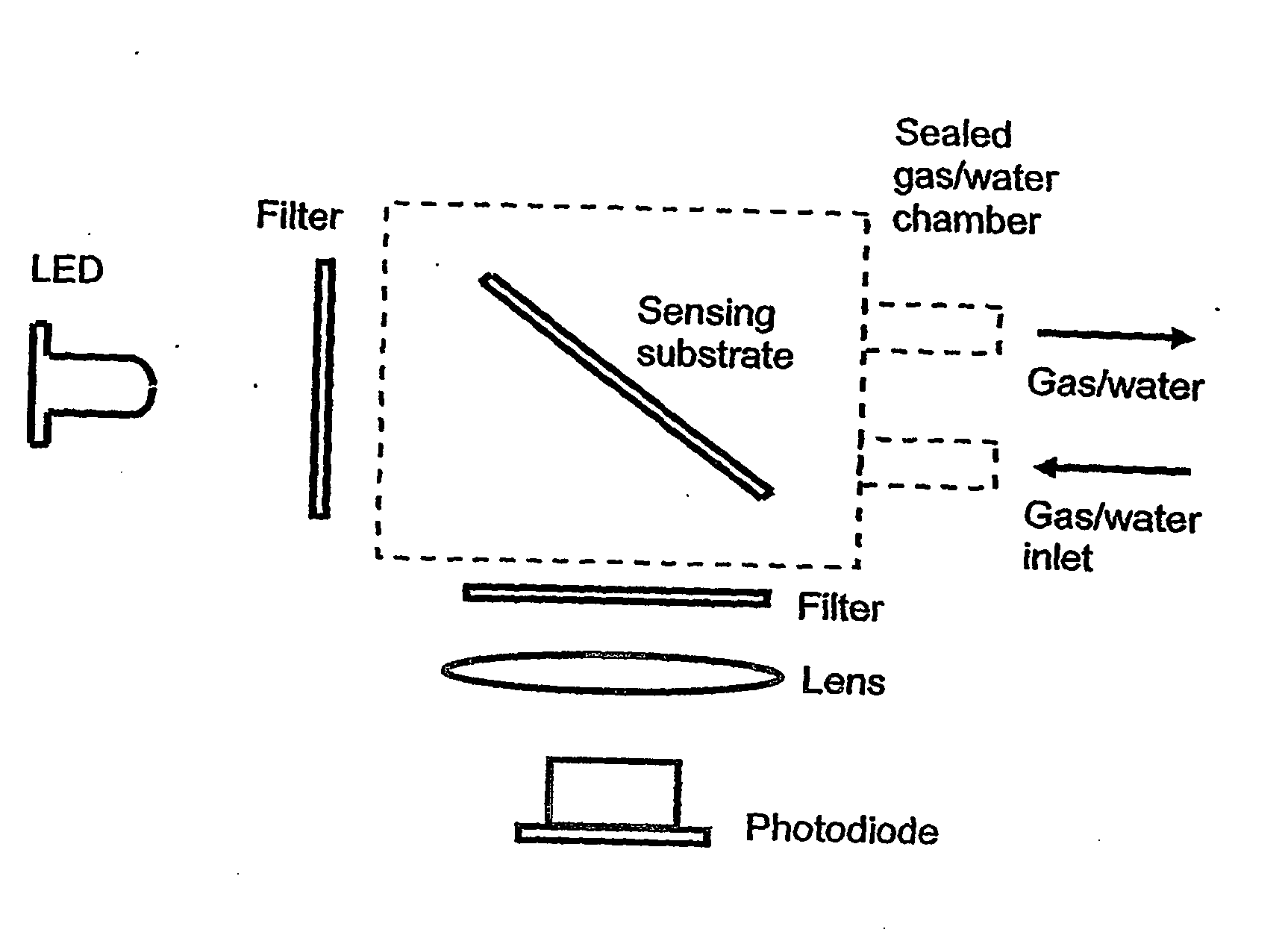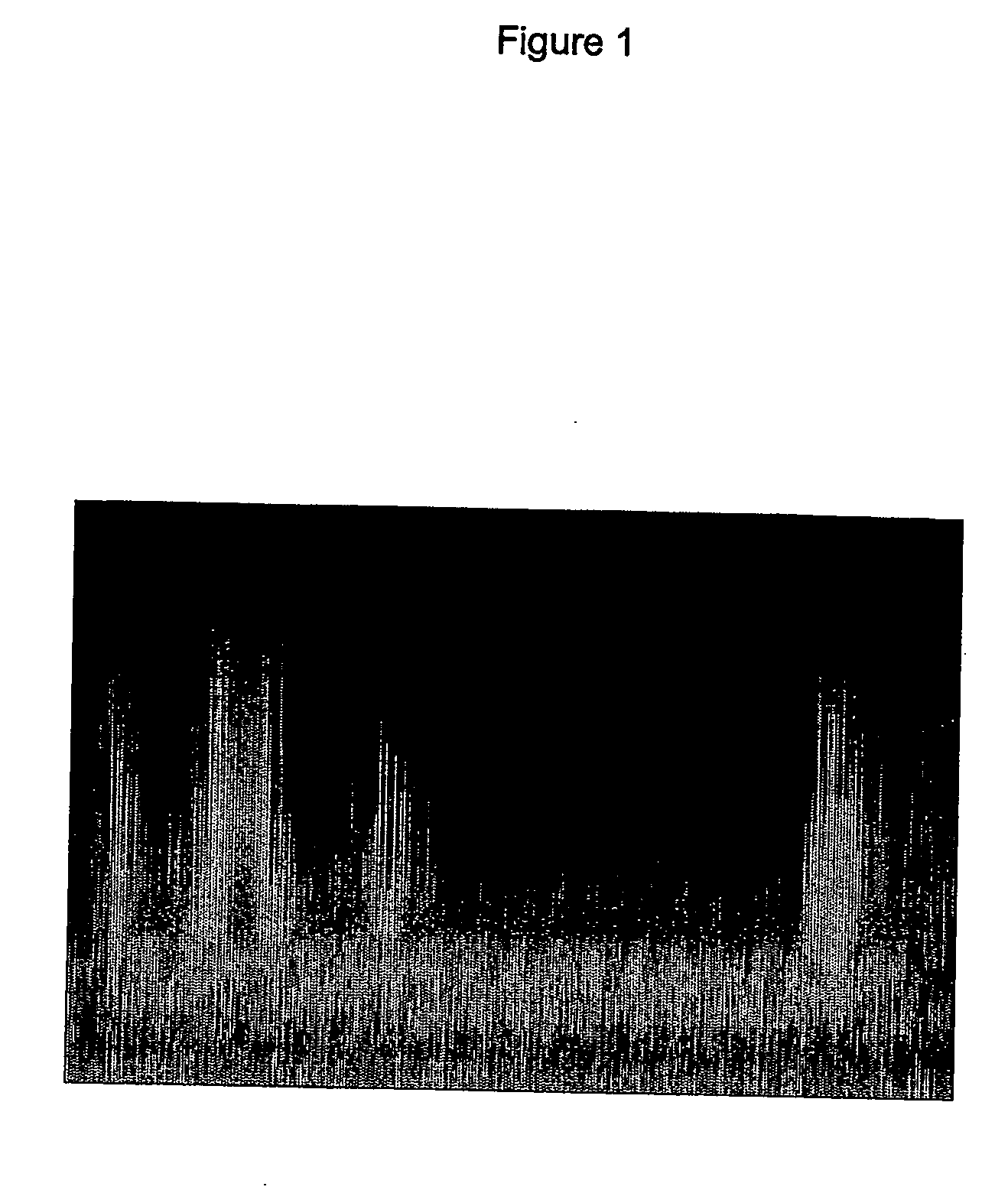Optical co2 and combined o2/co2 sensors
a technology of oxygen sensor and optical co2 is applied in the field of improved carbon dioxide and oxygen sensor, which can solve the problems of low mechanical strength of a polymer, affecting the calibration of the sensor, and less reliable in moist environments. achieve the effect of high wavelength tail of led emission and good temperature stability
- Summary
- Abstract
- Description
- Claims
- Application Information
AI Technical Summary
Benefits of technology
Problems solved by technology
Method used
Image
Examples
Embodiment Construction
[0045] Optical sensor films with associated scanner to confirm the integrity of the package and hence freshness of packaged food in a non-destructive manner. Sensor films have been developed for oxygen and carbon dioxide. They are fluorescent and their fluorescence changes with exposure to the specific gas concentration. The films can be deposited on a solid or a flexible substrate using standard printing techniques e.g. spin coating, screen printing etc. The films are excited by a common excitation source i.e. a blue LED, and the resultant fluorescence is detected using a silicon photodiode. These optoelectronic components along with relevant ICs and electronic components can be housed in an optical reader or scanner device capable of interrogating the sensor films.
[0046] Fluorescent sensors for oxygen and carbon dioxide have been developed. Both of these sensors can be scanned using an optical reader, which will give a readout of the concentration of oxygen and carbon dioxide in ...
PUM
| Property | Measurement | Unit |
|---|---|---|
| thickness | aaaaa | aaaaa |
| pH | aaaaa | aaaaa |
| concentration | aaaaa | aaaaa |
Abstract
Description
Claims
Application Information
 Login to View More
Login to View More - R&D
- Intellectual Property
- Life Sciences
- Materials
- Tech Scout
- Unparalleled Data Quality
- Higher Quality Content
- 60% Fewer Hallucinations
Browse by: Latest US Patents, China's latest patents, Technical Efficacy Thesaurus, Application Domain, Technology Topic, Popular Technical Reports.
© 2025 PatSnap. All rights reserved.Legal|Privacy policy|Modern Slavery Act Transparency Statement|Sitemap|About US| Contact US: help@patsnap.com



